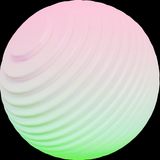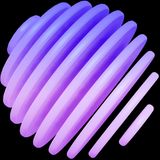
Follow these simple steps to create a new button in the Spruce CSS framework.
You must declare your new colors under the $colors map's btn property. In this post, we make a "dark" button (both filled and outlined variation), and our declaration looks like this:
@use 'sprucecss/scss/spruce' with (
$colors: (
'btn': (
'dark-background': hsl(205deg 100% 2%),
'dark-background-hover': hsl(205deg 100% 5%),
'dark-foreground': hsl(0deg 0% 100%),
'dark-outline-background-hover': hsl(205deg 100% 2%),
'dark-outline-border': hsl(260deg 4% 70%),
'dark-outline-foreground': hsl(205deg 100% 2%),
'dark-outline-foreground-hover': hsl(0deg 0% 100%),
'dark-outline-focus-ring': hsl(205deg 100% 2%),
'dark-shadow': hsl(205deg 100% 2% / 5%),
),
),
);You must choose an use a prefix (like "dark-") that you can reference later.
As you see, there are a bunch of options. The dark-outline-* is only for the outlined variation. We declare them to gain more control over their appearance.
For a basic button, you only need three of the values:
@use 'sprucecss/scss/spruce' with (
$colors: (
'btn': (
'dark-background': hsl(205deg 100% 2%),
'dark-background-hover': hsl(205deg 100% 5%),
'dark-foreground': hsl(0deg 0% 100%),
),
),
);Using the btn-variant and btn-variant-outline mixins you can generate two custom variant.
.btn--dark {
@include btn-variant('dark');
}
.btn--outline-dark {
@include btn-variant-outline('dark');
}After the declaration, you can use your new button modification classes.
<a href="https://sprucecss.com" class="btn btn--dark">
Open Spruce CSS
</a>
<a href="https://sprucecss.com" class="btn btn--outline-dark">
Open Spruce CSS
</a>If you declare the dark-shadow property, you can use the btn--dark-shadow to add a shadow to the button but only on the filled variation.
<a href="https://sprucecss.com" class="btn btn--dark btn--dark-shadow">
Open Spruce CSS
</a>

